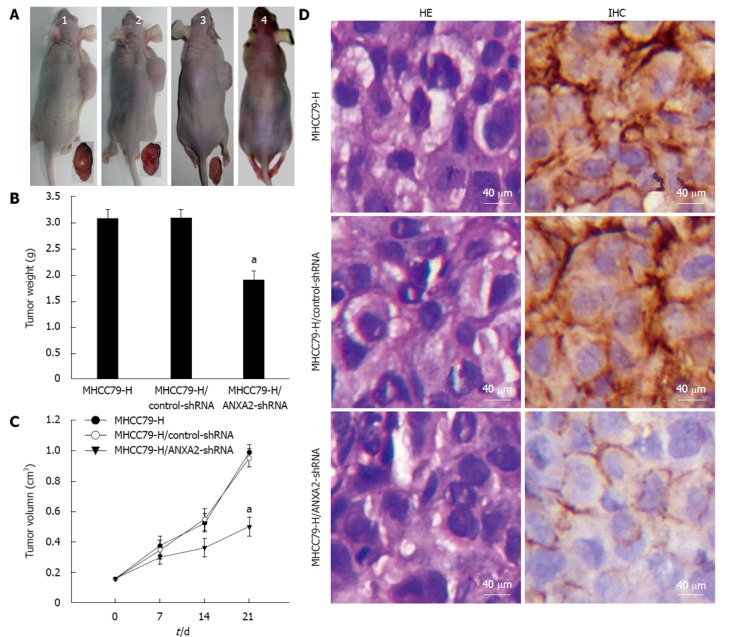Figure 4.

Inhibitive effect of small hairpin RNA-mediated annexin A2 silencing on xenograft tumour growth in vivo. A: Representative images of xenografted and control mice and resected tumours. The MHCC97-H (untransfected) group (1); the MHCC97-H/control-small hairpin RNA (shRNA) group (2); the MHCC97-H/annexin A2 (ANXA2)-shRNA group (3); the blank control group (4). Tumorigenic nude mice appeared obviously emaciated, especially the those in the MHCC97-H group and MHCC97-H/control-shRNA group; B: Average tumour weights. aP < 0.05 vs MHCC97-H group; C: Tumour growth rates. aP < 0.05 vs MHCC97-H group at post-injection day 21; D: Representative immunohistochemical analysis and hematoxylin and eosin staining results (× 400). The density of ANXA2 staining (brown) in the cytoplasm of MHCC97-H/ANXA2-shRNA cells was obviously lower than that for the MHCC97-H cells or the MHCC97-H/control-shRNA cells. ANXA2 was mainly localized in the membrane of the MHCC97-H/ANXA2-shRNA cells, and localized in both the membrane and cytoplasm of the MHCC97-H cells and the MHCC97-H/control-shRNA cells. The morphological characteristics of subcutaneous xenograft tumours derived from MHCC97-H/ANXA2-shRNA cells were not fundamentally different from the other tumours.
